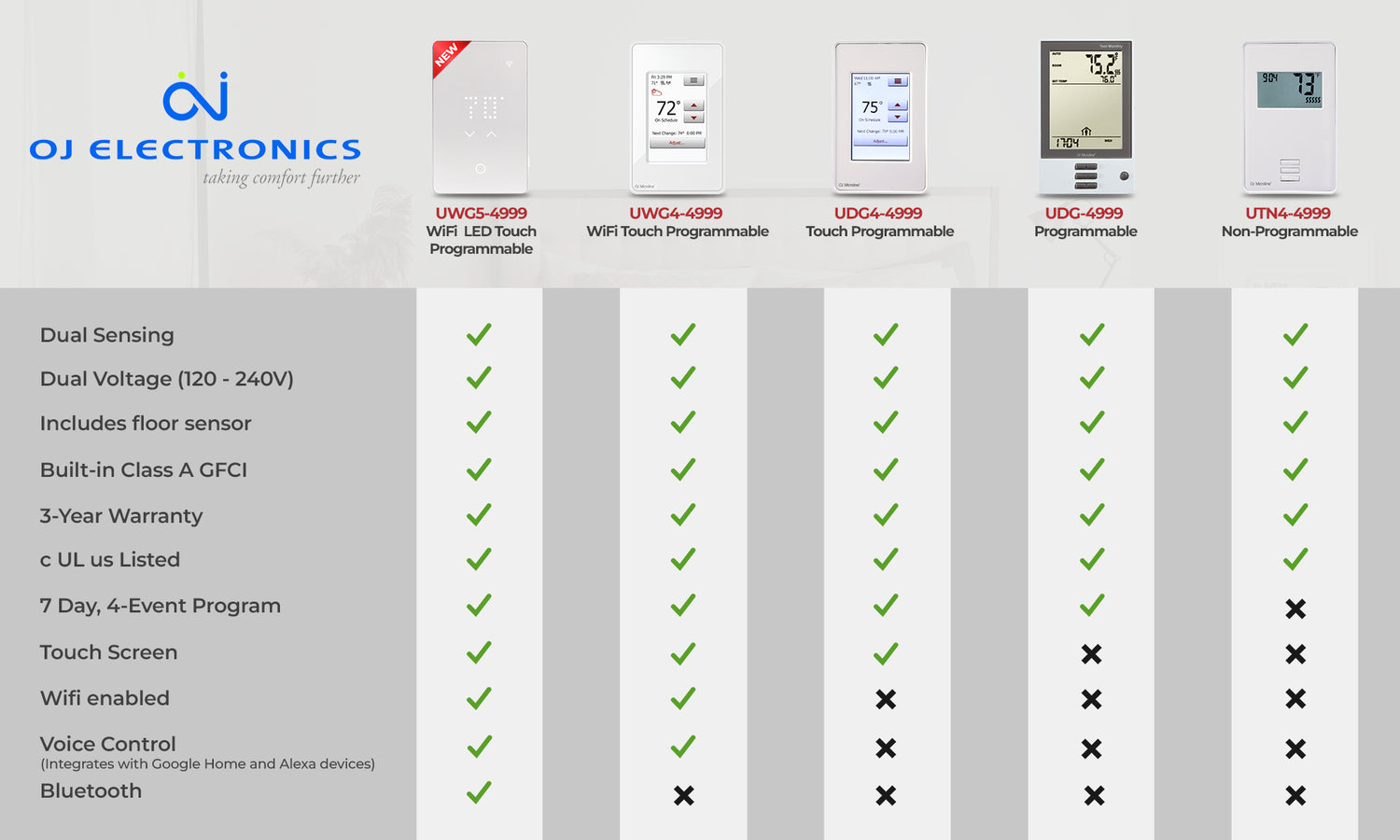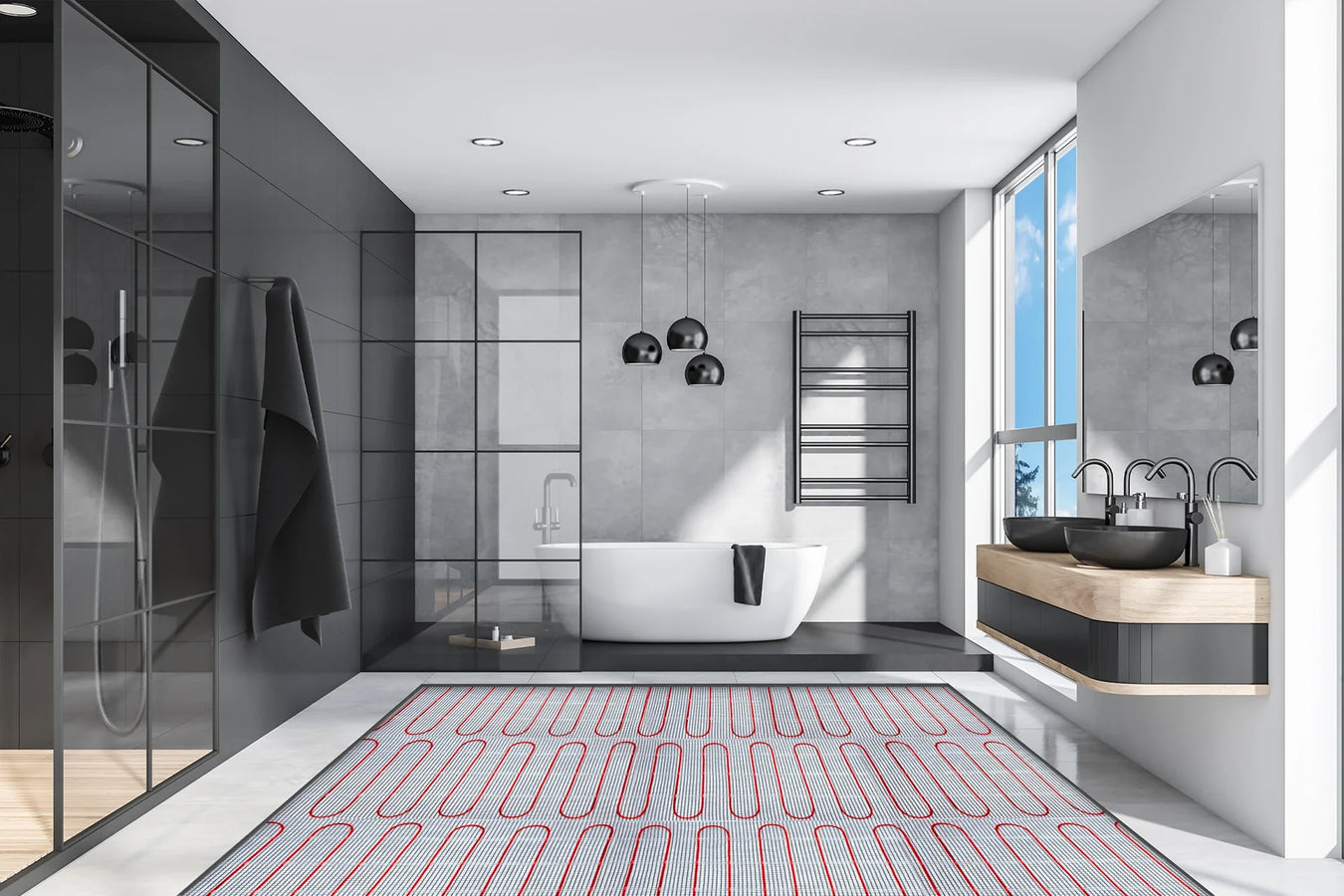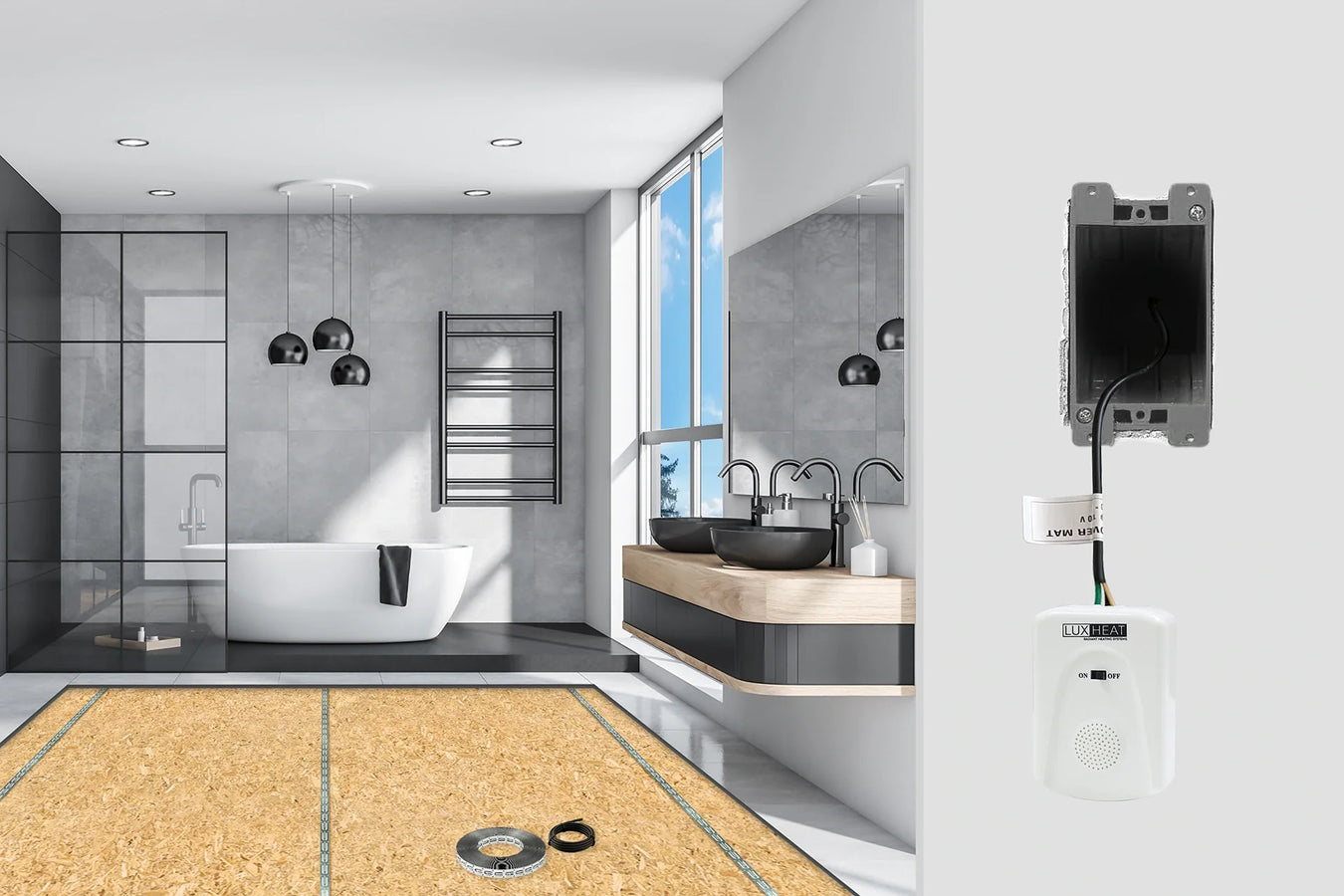Are OJ Microline Thermostats safe?
Yes, they feature built-in GFCI protection and are c-UL-us
approved for safe installation in the USA and Canada.
Can I adjust the temperature on my OJ Microline Floor Thermostat remotely?
Yes, the WiFi model features WLAN connectivity enabling remote access and management of the home underfloor heating system.
Can I set different temperatures throughout the house with the OJ Microline Floor Heating Thermostats?
Yes, you can install multiple thermostats with separate heating systems to create different zones or areas so you can control the temperature at room or area level.
Is the OJ Microline Thermostat difficult to install?
No, they are simple to install and set up and in fact the advanced models include extra features such as an online user guide and an install wizard to expedite the installation process.
What are some of the features of the OJ Microline Thermostats?
Our products are dual-voltage, dual-sensing, and have a Class A GFCI built in.
Can I control a radiant heat thermostat remotely?
Yes! Our WiFi-enabled thermostats allow you to adjust your heating from anywhere using a smartphone app.
Can I install a thermostat for floor heater myself?
While DIY installation is possible, we recommend hiring a licensed electrician for safe and proper wiring.
Do you need a specialized thermostat for radiant floor heating?
Yes. Radiant floor heating requires a high-voltage thermostat (120V or 240V), unlike standard HVAC thermostats that use low voltage (12-24V).
Should you leave an electric floor heating thermostat on all the time?
As far as safety goes, LuxHeat floor heating is designed to operate continuously and it is perfectly safe to leave your electric floor heating thermostat on heat all the time. However, continually running your system may result in higher energy costs. When using a programmable thermostat, you can set the heating system to come on just when you need it to ensure maximum energy efficiency.
Does the electric floor heat thermostat have a built in GFCI?
Yes, every OJ Microline electric floor heat thermostat has a built in Class A GFCI (Ground Fault Circuit Interrupter) ensuring safe operation.
Do I need the floor sensor for the electric heated floor thermostat?
While an electric heated floor thermostat can work without a floor sensor - using just the ambient air sensor - installing the floor sensor will allow you to accurately measure the temperature of your floor. This will afford superior control and comfort as well as enabling you to set floor temperature limits for more sensitive floor coverings.
What is the best thermostat for underfloor heating?
A programmable thermostat is ideal for most homes, while a WiFi-enabled thermostat offers added convenience with remote control options.




















